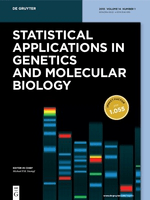
Statistical Applications in Genetics and Molecular Biology
Scope & Guideline
Empowering Biological Research with Robust Statistical Tools
Introduction
Aims and Scopes
- Statistical Modeling in Genomics:
The journal emphasizes the development of advanced statistical models to analyze genomic data, including methods for handling high-dimensional datasets, such as those arising from RNA-seq and microarray studies. - Integrative Analysis of Omics Data:
A core focus is placed on integrative approaches that combine various types of omics data (genomics, transcriptomics, proteomics, etc.) for comprehensive biological insights, including studies on cancer subtypes and disease mechanisms. - Bayesian Methods for Genetic Studies:
There is a significant emphasis on Bayesian statistical methods, particularly in the context of genetic association studies, population stratification, and mediation analysis, allowing for more robust inference in complex genetic datasets. - Machine Learning Applications in Genomics:
The journal explores the intersection of machine learning and genomics, highlighting innovative applications such as deep learning for protein function prediction and feature selection methods for gene expression analysis. - Methodological Innovations for High-Throughput Data:
Methodological contributions that address the unique challenges posed by high-throughput data, including batch effect correction, power estimation, and robust statistical testing, are frequently featured.
Trending and Emerging
- Deep Learning in Protein Function Prediction:
Recent publications show a significant trend towards the application of deep learning techniques, such as CNN and BiGRU models, to predict protein functions, indicating a growing interest in leveraging advanced computational methods for biological applications. - Bayesian Approaches for Complex Data:
There is an emerging focus on Bayesian methodologies for analyzing complex genomic data, particularly in the context of population stratification and multi-factor experiments, showcasing the versatility and robustness of Bayesian inference in genetics. - Integrative Pathway and Network Analysis:
The trend towards integrative analyses that combine gene expression, miRNA, methylation, and other data types for pathway analysis is on the rise, reflecting a broader interest in understanding the intricate regulatory networks involved in diseases. - High-Throughput Data Challenges:
Emerging themes include addressing the challenges associated with high-throughput data, such as batch effects and sample size estimation, which are crucial for ensuring the reliability of genomic studies. - Statistical Inference in Synthetic Datasets:
The exploration of statistical inference methodologies using synthetic datasets, such as antibody-antigen interactions, indicates a growing interest in developing robust statistical frameworks that can be tested and validated in controlled environments.
Declining or Waning
- Traditional Statistical Methods:
There is a noticeable decline in the publication of papers focusing on traditional statistical methods that do not incorporate modern computational approaches or high-dimensional data analysis, as the field moves towards more innovative and complex methodologies. - Single-Omics Analysis:
Research specifically focused on single-omics analysis (e.g., genomics alone) appears to be waning, as the trend shifts towards integrative studies that combine multiple omics layers for a more comprehensive understanding of biological systems. - Basic Genetic Association Studies:
The frequency of papers solely dedicated to basic genetic association studies, particularly those using simpler models without advanced statistical techniques, has decreased, reflecting an increased interest in more sophisticated modeling approaches.
Similar Journals
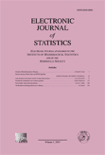
Electronic Journal of Statistics
Pioneering Insights in Statistics and ProbabilityElectronic Journal of Statistics, published by INST MATHEMATICAL STATISTICS-IMS, is a premier open-access platform dedicated to the field of statistics and probability, with a remarkable track record since its inception in 2007. With an ISSN of 1935-7524, this journal has quickly established itself as a leading resource within the top Q1 category in both Statistics and Probability, as well as Statistics, Probability and Uncertainty, highlighting its significance and impact in the academic community. The journal’s commitment to disseminating high-quality research allows researchers, professionals, and students to access valuable findings and methodologies that contribute to the advancement of statistical sciences. With its convergence set to continue until 2024, the Electronic Journal of Statistics remains a vital source for scholars looking to enrich their knowledge and engage with cutting-edge statistical theories and applications.

STATISTICAL PAPERS
Elevating Research in Statistics and ProbabilitySTATISTICAL PAPERS, published by Springer, is a leading journal in the field of Statistics and Probability that has been contributing to the academic community since 1988. With an impressive track record spanning over three decades, this journal falls within the prestigious Q2 quartile in both the Statistics and Probability and Statistics, Probability and Uncertainty categories, signifying its high-quality research output. It currently ranks #92 out of 278 in the Mathematics - Statistics and Probability category and #61 out of 168 in Decision Sciences - Statistics, Probability and Uncertainty, placing it in the 67th and 63rd percentiles respectively. Although the journal is not open access, it offers a vital platform for researchers, professionals, and students seeking to disseminate their findings and stay abreast of the latest advancements in statistical methods and applications. With its commitment to the highest standards of scholarship, STATISTICAL PAPERS plays a crucial role in shaping contemporary statistical discourse and fostering innovation within the field.
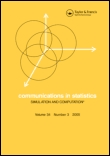
COMMUNICATIONS IN STATISTICS-SIMULATION AND COMPUTATION
Advancing the Frontiers of Statistical Simulation and ComputationCOMMUNICATIONS IN STATISTICS-SIMULATION AND COMPUTATION, published by TAYLOR & FRANCIS INC, is a pivotal journal in the fields of statistics, modeling, and simulation, catering to an audience of researchers, professionals, and students. With an ISSN of 0361-0918 and an E-ISSN of 1532-4141, this esteemed journal has been disseminating knowledge since 1976, covering a wide range of innovative methodologies and applications in statistics. Ranked in the third quartile for both Modeling and Simulation, and Statistics and Probability, as per the 2023 Category Quartiles, this journal serves as a crucial platform for advancing academic discourse and practical applications in these areas. Though not open access, it houses a wealth of peer-reviewed articles that contribute to the advancement of statistical theory and computational techniques, while its Scopus ranking positions it among the significant publications in the relevant fields. For those looking to stay at the forefront of statistical science, this journal is an invaluable resource.

Statistics in Biosciences
Unlocking Biological Mysteries with Statistical ExpertiseStatistics in Biosciences is a distinguished journal published by Springer, focusing on the innovative interplay between statistical methodologies and biosciences. Established in 2009, this journal aims to provide a platform for the dissemination of cutting-edge research in statistical applications within biochemistry, genetics, and molecular biology. With an impressive impact factor and a distinguished ranking in multiple categories, including Q2 in Biochemistry, Genetics and Molecular Biology (miscellaneous) and Q3 in Statistics and Probability, it serves as a crucial resource for researchers, professionals, and students seeking to deepen their understanding of statistical applications in biological contexts. The journal is accessible through traditional subscription models, ensuring that high-quality research remains available to a wide audience. Featuring contributions that advance statistical theory and application in the biosciences, Statistics in Biosciences is committed to fostering collaboration and innovation in a rapidly evolving scientific landscape.

STATISTICA SINICA
Pioneering Insights for Data-Driven DecisionsSTATISTICA SINICA, published by the esteemed STATISTICA SINICA organization, stands as a premier journal in the fields of Statistics and Probability, boasting a significant impact within the academic community. With an ISSN of 1017-0405 and E-ISSN of 1996-8507, this journal has evolved from its inception in 1996, continuing to publish cutting-edge research through 2024. As recognized by its recent categorization in Q1 quartiles in both Statistics and Probability and Statistics, Probability and Uncertainty for 2023, it ranks among the top journals in its discipline, meriting attention from researchers and practitioners alike. Despite lacking open access options, it delivers rigorous, peer-reviewed articles that contribute to the advancement of statistical science. With its base in Taiwan, and a dedicated editorial team located at the Institute of Statistical Science, Academia Sinica, Taipei, STATISTICA SINICA continues to be a vital resource for statisticians, data scientists, and related professionals seeking innovative methodologies and insights within this dynamic field.

Statistical Inference for Stochastic Processes
Pioneering the future of stochastic process analysis.Statistical Inference for Stochastic Processes is a premier academic journal published by SPRINGER, dedicated to advancing the field of statistical methods in stochastic processes. With an ISSN of 1387-0874 and an E-ISSN of 1572-9311, this journal provides a platform for rigorous research and innovative methodologies from 2005 through to 2024. It is positioned in the Q3 category for Statistics and Probability, ranking #194 out of 278 within the Scopus Mathematics domain, reflecting its significance among academic peers despite its relatively junior status in citation metrics. As a resource for researchers, professionals, and students alike, this journal aims to publish high-quality, peer-reviewed articles that contribute to the understanding and application of stochastic processes, making it an essential part of the statistical sciences landscape. While not offering open access, subscribers and institutions will find a wealth of knowledge and insights that are pivotal for both theoretical and practical advancements in statistics.

Algorithms for Molecular Biology
Bridging mathematics and biology for groundbreaking discoveries.Algorithms for Molecular Biology, published by BMC, is a premier Open Access journal dedicated to advancing the field of molecular biology through innovative computational methods. Since its inception in 2006, the journal has provided a vital platform for researchers to share their findings and methodologies, covering a diverse range of topics at the intersection of applied mathematics, computational theory, and molecular biology. With a notable impact factor reflected in its Scopus ranks, including a Q2 classification in both applied mathematics and computational theory, as well as Q3 in molecular and structural biology, the journal plays an essential role in this rapidly evolving discipline. The wide accessibility of articles published under the Open Access model ensures that research findings reach a global audience, fostering collaboration and innovation amongst scientists and professionals alike. As we look towards converging years from 2006 to 2024, Algorithms for Molecular Biology continues to uphold the highest standards of scientific integrity and excellence, reinforcing its status as a key resource for those engaged in the profound complexities of molecular biology.
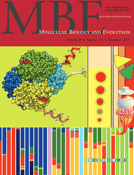
MOLECULAR BIOLOGY AND EVOLUTION
Advancing Knowledge in Genetics and EvolutionMOLECULAR BIOLOGY AND EVOLUTION, published by Oxford University Press, stands as a premier journal in the fields of molecular biology, evolutionary biology, and genetics. With a proud history dating back to its inception in 1983, the journal spans a convergence period through 2024, providing an exceptional platform for disseminating high-quality research. The journal is recognized in the top Q1 quartile across multiple categories, including Ecology, Evolution, Behavior and Systematics, and Genetics, reflecting its significant impact and relevance in these disciplines. With impressive Scopus rankings—10th in Ecology and Evolution, 12th in Genetics, and 22nd in Molecular Biology—it serves as a vital resource for scholars aiming to stay informed on cutting-edge developments in evolutionary processes and molecular genetics. While it currently does not offer open access, its curated contents resonate well with an audience of researchers, professionals, and students deeply interested in accelerating their understanding of the complexities of life through an evolutionary lens.

JOURNAL OF MULTIVARIATE ANALYSIS
Empowering Researchers with Cutting-Edge Analytical ToolsJournal of Multivariate Analysis, published by Elsevier Inc, stands as a pivotal resource in the disciplines of Numerical Analysis and Statistics. With a history of scholarly contribution since 1971, this journal has maintained a reputation for excellence, evidenced by its Q2 ranking in critical categories as of 2023. The journal covers a wide array of topics within multivariate statistical methods and their applications, making it an essential publication for researchers, professionals, and students seeking to deepen their understanding and application of sophisticated analytical techniques. Although not open-access, the journal provides valuable insights into the ever-evolving fields of statistics and probability, enabling readers to access and contribute to cutting-edge research up to the year 2024. By addressing significant theoretical and practical challenges in statistical analysis, Journal of Multivariate Analysis fosters a community of intellectual rigor and innovation.
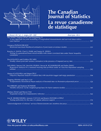
CANADIAN JOURNAL OF STATISTICS-REVUE CANADIENNE DE STATISTIQUE
Your Gateway to Cutting-Edge Statistical ResearchCanadian Journal of Statistics - Revue Canadienne de Statistique is a prestigious publication in the field of statistics, managed by Wiley. Since its inception in 1973, this journal has served as an essential resource for researchers, practitioners, and students, offering insights into a diverse range of statistical methodologies and applications. With its impact reflected in its 2023 categorization as Q2 in Statistics and Probability and Q3 in Statistics, Probability and Uncertainty, the journal stands out among its peers, exemplifying rigorous standards in empirical research. The journal's ISSN is 0319-5724 and its E-ISSN is 1708-945X, providing a robust platform for the dissemination of knowledge in the field. While it does not offer open access, the journal remains highly regarded and well-cited, contributing significantly to the advancement of statistical theory and practice. As it continues to publish cutting-edge research through to 2024, the Canadian Journal of Statistics is a must-read for anyone seeking to stay informed on the latest trends and developments in statistics.